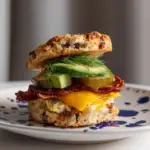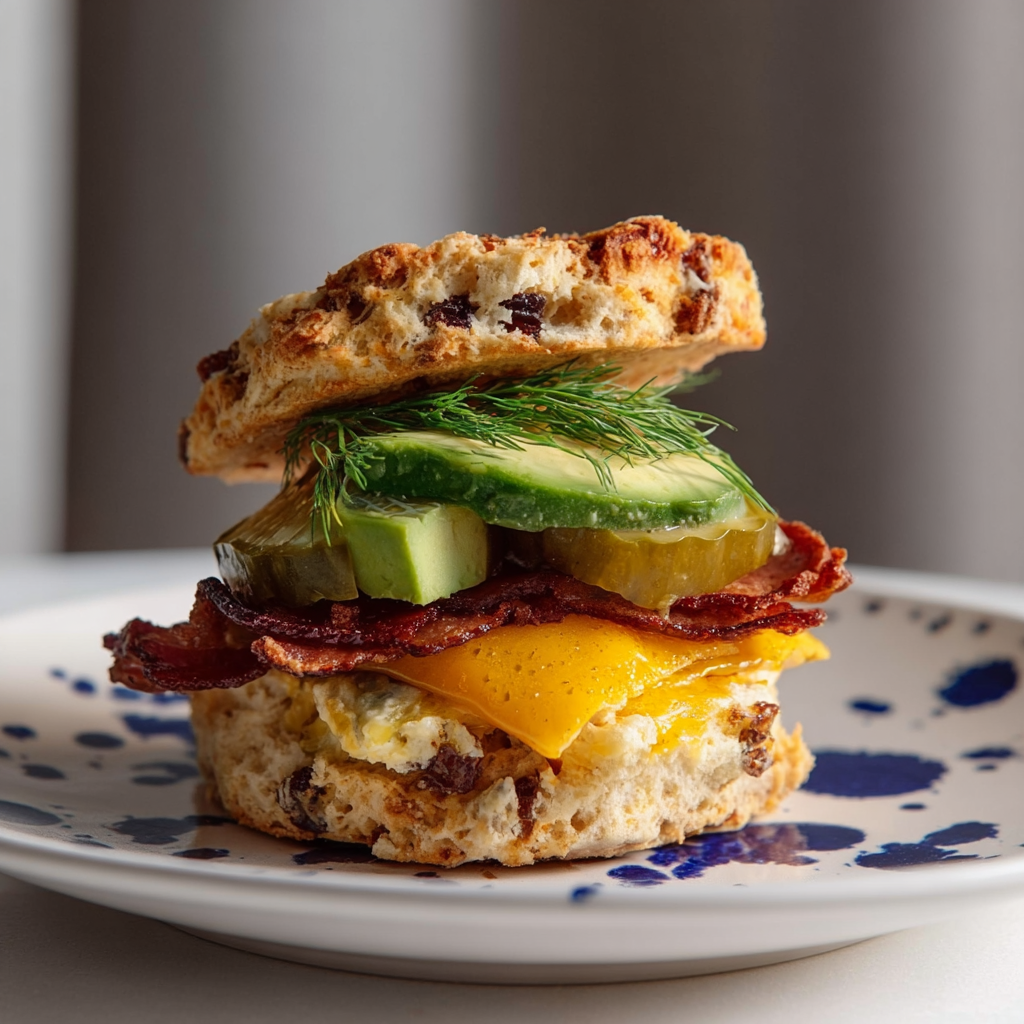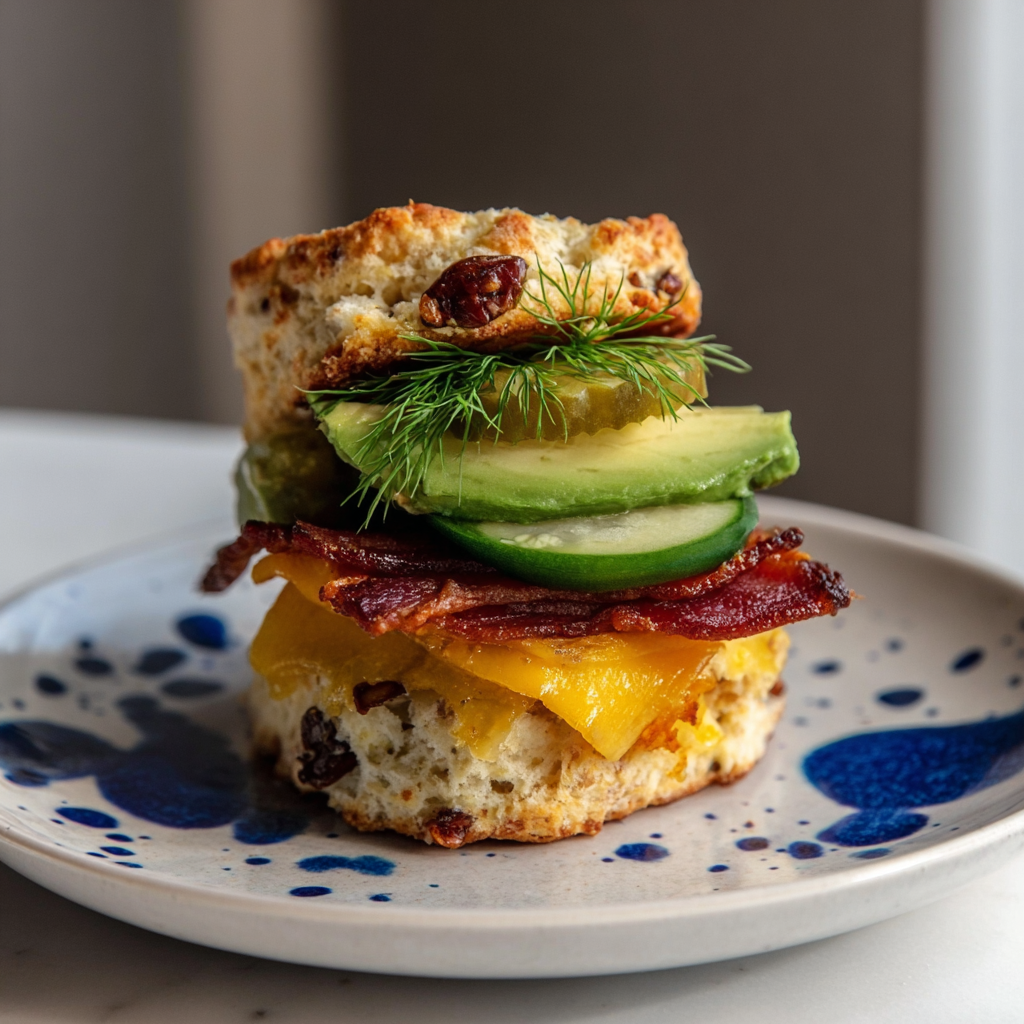The Best Fluffy Eggs: Light, Creamy, and Absolutely Irresistible
There’s nothing quite as comforting as a plate of fluffy eggs. They’re the quiet hero of breakfast — simple, luxurious, and endlessly customizable. Whether you’re making a slow weekend brunch, an early-morning bite before work, or an elegant addition to avocado toast, perfectly fluffy eggs can transform an ordinary meal into something indulgent.
When people talk about the best fluffy eggs, they often mean those impossibly soft, cloud-like curds that melt in your mouth. And the secret to achieving that perfect texture isn’t complicated — it’s all about patience, temperature control, and the right ratio of eggs to cream. The heavy cream in this recipe makes the eggs extra rich and smooth, while the slow, gentle cooking creates that tender, custard-like consistency.
I’ve been perfecting this recipe for years, and it’s the one I always come back to. It’s foolproof, fast, and incredibly rewarding — the kind of dish that makes you close your eyes after the first bite. The cream adds just enough fat to make the eggs velvety, while whisking them thoroughly ensures they cook up evenly and fluffy. Add a sprinkle of salt before cooking (not after!) so the seasoning blends right into the mixture, enhancing the natural flavor of the eggs.
If you love perfect eggs as much as I do, you might enjoy reading Serious Eats’ guide to creamy scrambled eggs or BBC Good Food’s tips for fluffy omelets. But this recipe right here? It’s the one you’ll want to memorize. Let’s get cooking!
Recipe Card
Print
The Best Fluffy Eggs Recipe — Perfectly Soft and Creamy Every Time
Description
These best fluffy eggs are ultra-soft, creamy, and perfectly seasoned. Made with just three simple ingredients — eggs, heavy cream, and salt — they’re the ultimate comfort breakfast that feels gourmet with minimal effort.
Ingredients
- 9 eggs
- ½ cup heavy cream
- 1 teaspoon kosher salt
Instructions
- Whisk the eggs and cream.
In a large bowl, crack the eggs and add the heavy cream and salt. Whisk vigorously for 30–45 seconds until the mixture is completely smooth and pale yellow — this step is crucial for incorporating air, which creates that signature fluffiness. - Preheat your pan.
Set a nonstick skillet over low to medium-low heat. Add a small knob of butter or a drizzle of oil if desired. The pan should be warm but not sizzling — if it’s too hot, the eggs will seize and turn rubbery. - Cook slowly and gently.
Pour the egg mixture into the pan and let it sit for about 10 seconds. Then, using a silicone spatula, gently push the eggs from the edges toward the center, forming soft folds. Keep the heat low and continue this motion until curds begin to form. - Remove before fully set.
When the eggs are mostly cooked but still slightly glossy, remove the pan from heat. The residual warmth will finish cooking them perfectly, leaving them soft and silky. - Serve immediately.
Fluffy eggs are best eaten fresh! Serve on buttered toast, over sautéed spinach, or topped with chives, herbs, or cheese if desired.
Notes
The active cooking time is short, but patience is everything here. Keep your heat low — too hot, and you’ll lose that dreamy texture. A silicone spatula helps you fold gently without breaking the curds. For an extra boost of flavor, cook them in butter instead of oil, and serve them right off the stove for maximum creaminess.
Advanced Techniques
Mastering Low-and-Slow Cooking for Creamy Texture
Cooking eggs on low heat gives you time to form delicate curds instead of large, tough ones. It might take a few extra minutes, but the reward is worth it: soft, custard-like eggs that melt in your mouth. Constant motion isn’t necessary — gentle folds are key.
Whisking for Air and Volume
The secret to the best fluffy eggs lies in vigorous whisking. Whipping air into the mixture before it hits the pan helps create lighter, puffier curds. Use a large bowl and whisk until you see small bubbles form — that’s when you know the mixture is aerated enough.
Choosing the Right Pan and Tool
A nonstick pan is your best friend for this recipe. Stainless steel tends to stick, while cast iron holds too much heat. Pair it with a flexible silicone spatula so you can gently sweep the eggs across the surface without breaking them.
Adding Cream at the Right Ratio
The ½ cup of heavy cream for 9 eggs is the sweet spot. Too little, and your eggs won’t be as rich; too much, and they’ll feel heavy. Cream helps slow the cooking process while adding luxurious smoothness.
Finishing Touches That Elevate the Dish
A touch of chives, a sprinkle of flaky salt, or even a drizzle of truffle oil can take your fluffy eggs from basic to brunch-worthy. I also love topping them with smoked salmon or avocado slices for a restaurant-style finish.

Storage, Shelf Life, and Maintenance Tips
Storing Fluffy Eggs for Later
While eggs are best fresh, you can store leftovers in an airtight container in the refrigerator for up to 2 days. Keep in mind they’ll firm up slightly when reheated.
Reheating Without Drying Out
To maintain that creamy texture, reheat gently in a nonstick pan over very low heat with a splash of milk or cream. Stir slowly just until warmed through — avoid microwaving if possible.
Using Leftover Eggs in Other Dishes
Leftover fluffy eggs make a great filling for breakfast burritos, sandwiches, or wraps. They also mix beautifully into fried rice or noodles for an easy second meal.
Freezing Tips (Not Recommended)
Technically, you can freeze scrambled eggs, but they lose their tender texture. If you must freeze, do so before adding any dairy — then thaw overnight and add cream during reheating.
Refreshing the Flavor Before Serving Again
Add a sprinkle of fresh herbs or a pat of butter while reheating to bring back the rich aroma and taste. It’s a simple way to make reheated eggs taste just-cooked.

Dietary Adaptations and Substitutions
Making Dairy-Free Fluffy Eggs
Substitute heavy cream with a non-dairy alternative like oat milk or unsweetened cashew cream. They create a surprisingly similar texture without changing the flavor much.
Keto or Low-Carb Friendly
This recipe is naturally keto-friendly, thanks to its fat content from cream. Serve it with avocado or bacon for a filling low-carb breakfast that keeps you satisfied for hours.
Lighter Version with Milk
For a lighter version, replace the heavy cream with whole milk or half-and-half. The eggs will still be fluffy but slightly less rich — perfect for everyday breakfasts.
High-Protein Boost
Add a few extra egg whites for higher protein and less fat. Use about 6 whole eggs plus 3 whites — the result is just as airy but lighter in texture.
Vegetarian Pairings
These fluffy eggs pair wonderfully with roasted vegetables, sautéed spinach, or tomato confit for a complete vegetarian meal that feels decadent yet wholesome.

FAQs About The Best Fluffy Eggs
Why Are My Eggs Not Fluffy?
If your eggs turned out dense or rubbery, the heat was likely too high or you over-stirred. Keep the flame low and use slow, sweeping motions to maintain their delicate structure.
Can I Make These Eggs Without Cream?
Yes! You can substitute with milk, half-and-half, or even water in a pinch. Cream just adds richness and slows down the cooking for a softer texture.
Should I Salt Before or After Cooking?
Always salt before cooking — it breaks down proteins in the eggs, making them tender and evenly seasoned throughout.
Can I Add Cheese or Herbs?
Absolutely. Fold in shredded cheese, herbs, or even cooked veggies at the very end of cooking to maintain that creamy consistency.
How Can I Make My Eggs Look More “Restaurant Style”?
Use a ring mold to shape the eggs neatly on the plate, and garnish with chives or microgreens. A drizzle of olive oil or butter on top adds shine and flavor.

Conclusion & Final Thoughts
These best fluffy eggs prove that sometimes the simplest recipes are the most satisfying. With just three ingredients and a little technique, you can create a dish that feels luxurious and comforting at the same time. There’s something magical about the way the eggs turn silky and airy when treated gently — it’s pure breakfast bliss.
What I love most about this recipe is its versatility. You can enjoy it plain, or dress it up for brunch with herbs, cheese, or smoked salmon. The method stays the same: low heat, patience, and a bit of care. Once you master it, you’ll never go back to rushed, dry scrambled eggs again.
Whether you’re cooking for yourself on a lazy Sunday morning or making breakfast for a crowd, this technique guarantees eggs that impress every time. They’re light as clouds, rich from the cream, and perfectly seasoned — the kind of dish that reminds you how good simple food can be.
So, grab your whisk, take a deep breath, and slow down the cooking process. The reward — those tender, creamy, fluffy eggs — is absolutely worth it.
